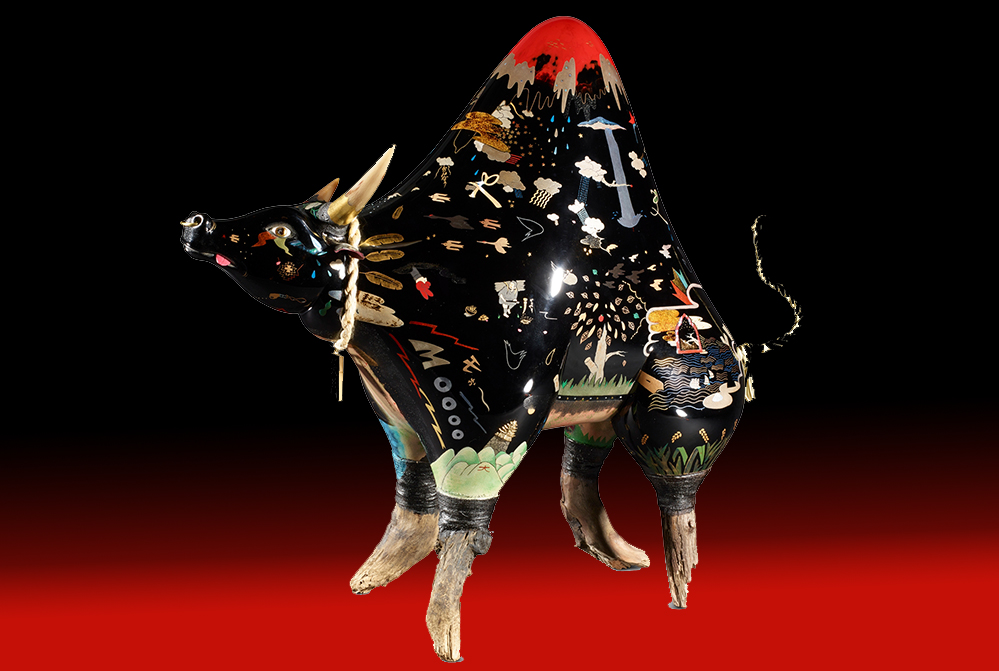
Since the Neolithic era, artisans in East Asia have coated bowls, cups, boxes, baskets, and other utilitarian objects with a natural polymer distilled from the sap of the rhus verniciflua, known as the lacquer tree. Lacquerware was – and still is – prized for its sheen, a lustrous beauty that artists learned to accentuate over the centuries with inlaid gold, silver, mother-of-pearl, and other precious materials.
Since the late 1980s, this tradition has been challenged. A small but enterprising circle of lacquer artists have pushed the medium in entirely new and dynamic directions by creating large-scale sculptures, works that are both conceptually innovative and superbly exploitive of lacquer’s natural virtues. To create these forms and shapes, contemporary lacquer artists bend tradition to their needs. Kofushiwaki Tsukasa’s Fallen Moon I is four meters (13 feet) long, a scale enabled by the kanshitsu technique, developed in China during the Han Dynasty (206 BCE – 220 AD), in which a base of lacquer-saturated hemp fiber is created with a mold. Many artists have gravitated to polystyrene, a lightweight, flexible, yet immutable material, such as Aoki Chie’s Body 09-1. For The Dual Sun, Kurimoto Natsuki used an even more modern base: an automobile hood.
Organized by the Minneapolis Institute of Art, the thirty works by sixteen artists comprise the first-ever comprehensive exhibition of contemporary Japanese lacquer sculpture. They have all been drawn from the Clark Collections at Mia, the only collection in the world to feature this extraordinary new form.